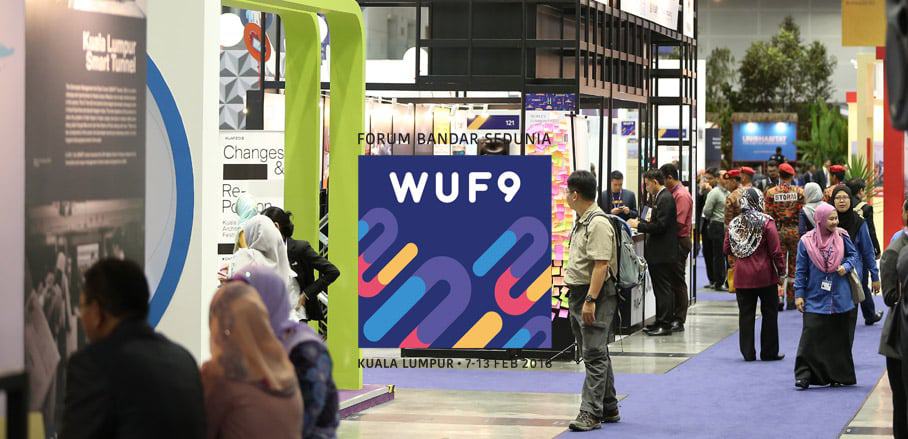All WUFed out, but what comes next?
By Gregory Scruggs
The stacks of business cards have grown high and the days have blurred together. The Ninth Session of the World Urban Forum has been closed today. The biennial event has cemented its status as the premier place on the planet for anyone interested in the nuts and bolts of cities to immerse themselves in nearly every aspect of urban issues, from technical data collection methods to complex legal questions to heartfelt activism. As a weeklong crash course in urbanisation, there is no doubt that WUF9 is worth the journey for urbanists of all stripes.
[inlinetweet prefix=”” tweeter=”URBANET” suffix=””]While World Urban Forum does not yet have a formal role in the U.N. system, it was still a major milestone on the road post-Quito[/inlinetweet]. As such, where does the forum leave the local perspective in global policy, namely the three major international agreements that hold huge import for cities: the New Urban Agenda, the Sustainable Development Goals, and the Paris Agreement on climate change?
For UN-Habitat’s point person on Goal 11, head of research Eduardo Moreno, the last seven days in Kuala Lumpur leave him feeling better about the prospects of the global community coming together in July at the UN’s annual SDG review to discuss the state of progress toward the so-called urban SDG.
Chiefly,[inlinetweet prefix=”” tweeter=”URBANET” suffix=””] the forum was an opportunity to have an initial meeting on the first quadrennial report on the New Urban Agenda[/inlinetweet], which UN-Habitat will prepare this year. Two writing workshops are already scheduled for March and May.
“We are reporting on both agendas,” Moreno said, explaining that the goal is to highlight the “convergence” between the New Urban Agenda and the SDGs. “Where they are dialoguing and where they are different,” he said.
Moreno hinted at the possibility of statistical indicators specific to the New Urban Agenda, which would be a departure from what was formally agreed upon in Quito. Those might be necessary, however, because the indicators to measure Goal 11 remain precarious.
As of December 2017, just five of the 15 indicators agreed upon to measure global progress toward sustainable cities were classified as “clear” with an agreed methodology collected by at least half of all countries. That is the lowest number of settled indicators for any of the 17 goals.
“It’s because urbanisation is a new thing to measure,” Moreno explained. “With Goal 11, you are changing the system of data collection.” He pointed out that 9 of the 15 urban SDG indicators are to be collected locally, which creates new challenges for national statistical offices.
“Once you collect city-level data, how are you going to aggregate it at the national level?” he asked rhetorically.
UN-Habitat is already working with several countries, including Argentina, Botswana, Colombia, and Tunisia, on that very issue by helping them design a representative “national sample of cities”. The agency pioneered that approach with its global sample of 200 cities. (Only Colombia will be submitting a voluntary national review in 2018, however.)
While the idea of a national sample of cities is promising, Moreno does not expect the 47 countries who will review their nation’s progress toward the SDGs in July to have all completed the exercise. As a result, he called the initial round of reviews on Goal 11 a “first approach.”
“Since for many indicators the method or data is not yet there, countries will be tempted – which is normal – to start reporting on a number of basic indicators for which they have information,” he said. In other words, the urban community should not expect a nuanced portrait of global progress on sustainable urbanization. “It’s an incremental process in that sense,” Moreno said.
Despite what could be limited statistical sophistication at this year’s Goal 11 review, others remain bullish because of the role that local governments can play in both the SDGs and the Paris Agreement.
On Monday, the Cities Alliance released a report on the role of local governments in the follow-up and review of the global sustainability agendas. It highlighted the first-ever forum of local and regional governments that will be held at the SDG review as a major opportunity to raise awareness during an event where global progress toward sustainable urbanisation will be one of the topics du jour.
The report also mentioned the Talanoa dialogues, an outcome of last year’s COP23 conference that proposes using Fijian storytelling to encourage countries to increase their ambition level when it comes to climate action. On Friday, ICLEI and the Global Covenant of Mayors for Climate and Energy announced that cities, too, will host some 40 municipal-level Talanoa dialogues in the hopes of speeding up access to climate finance.
[inlinetweet prefix=”” tweeter=”URBANET” suffix=””]“Cities should play a starring role in the Paris Agreement implementation,” Quito Mayor Mauricio Rodas told URBANET.[/inlinetweet] His city is spearheading the initiative and will be among the first to host a dialogue. “It would be impossible for countries to fulfil their commitments to the Paris Agreement without cities,” he said.
- San Francisco Climate Summit Not Global Enough for Developing World Leaders - 17. September 2018
- Climate Dance in San Francisco - 11. September 2018
- All WUFed out, but what comes next? - 13. February 2018
